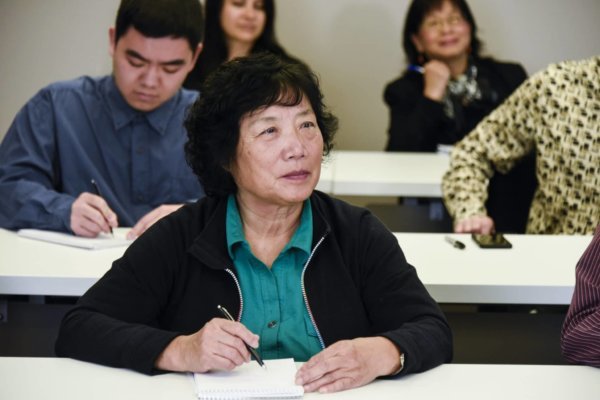By April Xu — Edited by Anthony Advincula
NEW JERSEY — On April 1, National Census Day, Chinese Americans had a plan. Leaders and volunteers from the community hoped to hold in-person events and distribute flyers around hard-to-count neighborhoods to spur participation in the decennial count.
But that was before COVID-19. As the novel coronavirus continues to spread, with the number of cases and deaths has surged in New Jersey since March, Chinese Americans here face new challenges to engage in the 2020 Census.
The stakes are apparently high in the community. Now that public gatherings and other face-to-face activities are out, some leaders and advocates are scrambling to accommodate the sudden shift to work remotely and digitally.
“We are in a changing environment,” said Howard Shih, director of research and policy at Asian American Federation (AAF). “Covid-19 has heavily impacted our in-person interactions.”
The plans [that were made for the entire year] of going to festivals and community centers, street tabling, and visiting grocery stores and restaurants to promote the Census, Shih said, are now all gone.
“Social distancing has really put us in a bind,” he said, adding that AAF and many other organizations are trying to transition to digital and social media. “We need to figure out how to put the previously used content into these new platforms.”
On March 21, New Jersey Governor Phil Murphy announced a statewide stay-at-home order, ceasing all non-essential retail businesses. And this week, according to an updated schedule, U.S. Census Bureau Director Steve Dillingham has suspended all Census field operations until June 1 and extended counting to Oct. 31, 2020.
As of April 13, according to Johns Hopkins University’s Coronavirus COVID-19 global tracker, New Jersey reported 64,584 cases of COVID-19. Nearly 1.9 million cases have been confirmed worldwide since the start of the outbreak of the disease. Deaths attributed to COVID-19 total 2,443 in New Jersey, a rate of about 3.8% of known cases.
‘Top-down, bottom-up’ approach
Eric S. Kipnis, manager of constituent relations at the New Jersey Department of State, said what is common in the current health crisis is a “top-down, bottom-up strategy approach” in the state government.
“Top-down means the government uses the media to send out the information and give all the support the community partners need,” Kipnis said. “And bottom- up approach means that all people — volunteers groups, everyday people, advocacy groups, faith-based groups, and government at all levels — from New Jersey gets involved in the Census.”
The backbone of the Census efforts, he added, is the local complete count committees. These are the action organizing teams and community action organizing hub.
“We are moving from in-person activities to virtual activities. We are looking at things like virtual kiosks. It’s not quite the same as walk-in kiosks, but the concept is still the same,” Kipnis said. “‘Do we have to repurpose it a little bit?’ Absolutely. Everybody repurposes, but nobody stops.”
U.S. residents stuck in China
While going digital is unprecedented since the start of the U.S. Census in 1790, Lisa Moore, assistant regional Census manager for the U.S. Census Bureau, said that filling out the Census questionnaire online or by phone has become more important than ever.
Because of the COVID-19 pandemic, many U.S. residents — including Chinese Americans — may have been temporarily stuck in China or elsewhere, and Moore pointed out that answering the Census questionnaire online or by phone is “safe, easy and important” to do.
“We need to encourage everyone to register where they are usually living most of the time. Many have been stuck outside the United States. There are a lot of students who now live with they parents because of the coronavirus, but they should complete their Census. They can do it online or over the phone, if they are not home to actually receive that invitation,” Moore said.
Digital divide
But what about those residents who have no access to computers and the Internet? Shih said that these populations, especially in the immigrant communities, are the hardest to reach.
The only solution is to rely on an in-person interaction, he added, and community partners are now trying to figure out if these people can be contacted by those who are digitally connected.
“We just need to figure out how we could leverage whatever opportunities that we have right now. We will connect those people who are not digitally connected,” Shih said. “When things get better, then we can ramp up again those in-person interactions.”
This story was produced as part of the 2020 Census: New Jersey Media Counts initiative from the Center for Cooperative Media at Montclair State University.


